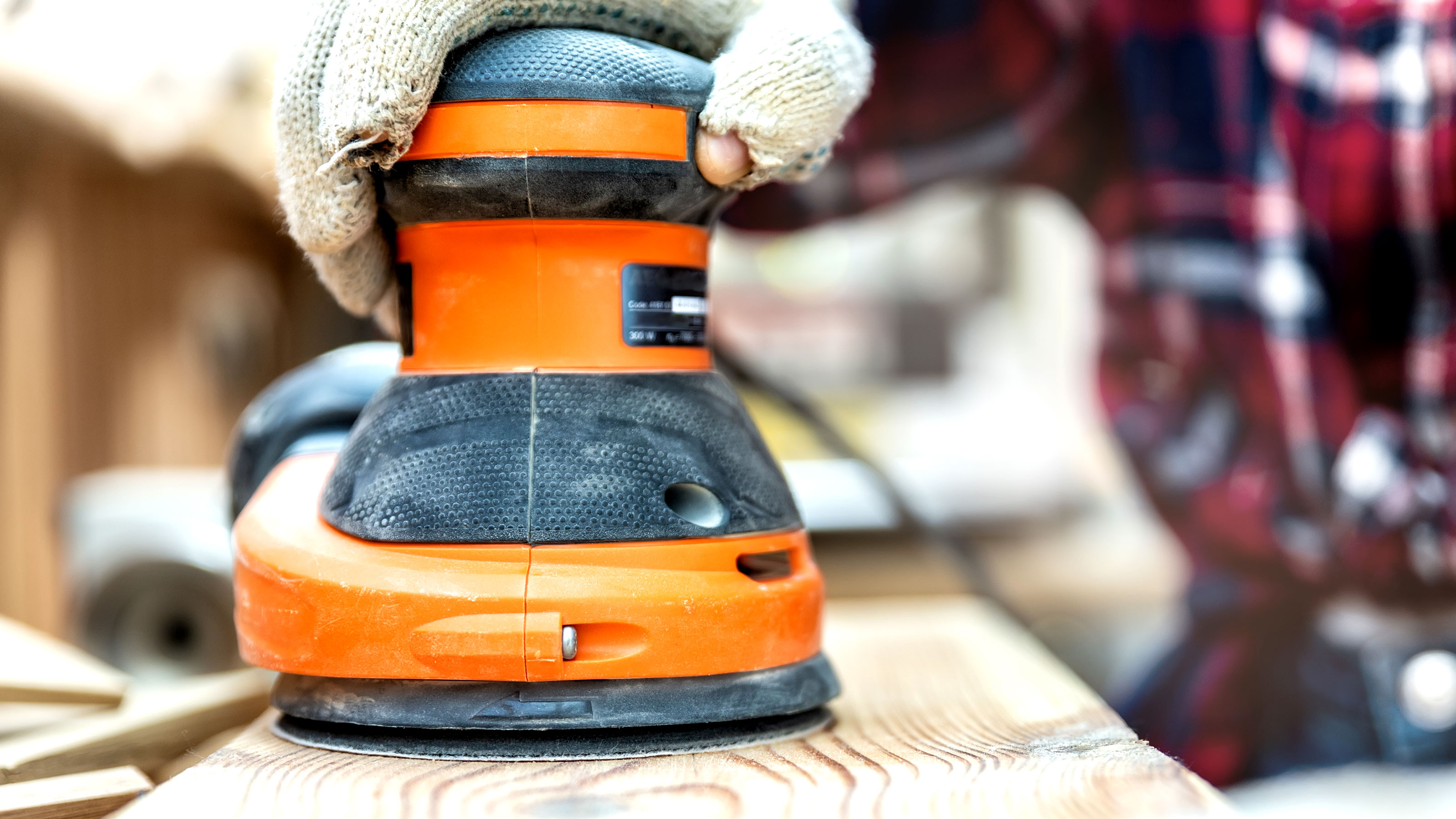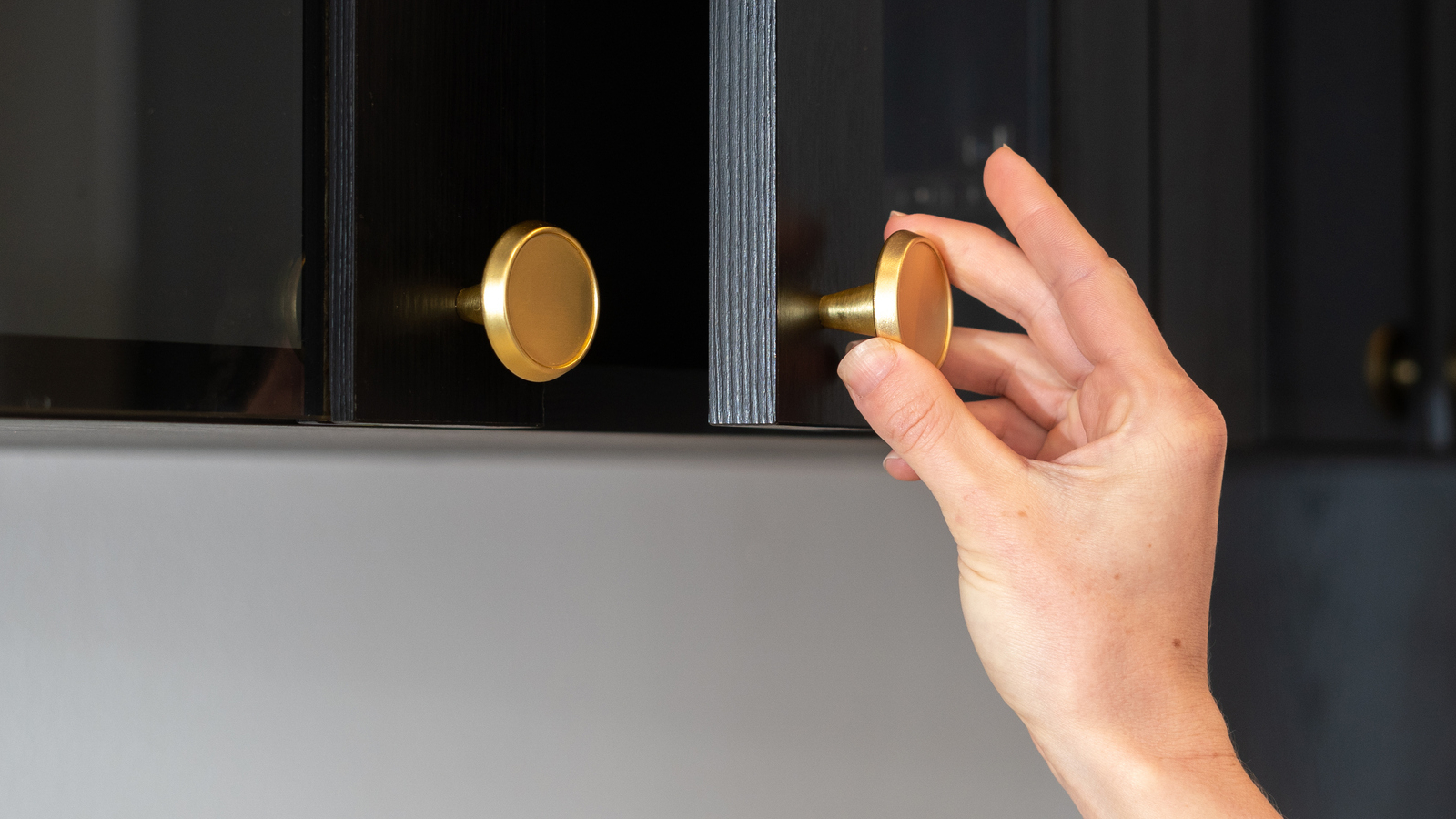What is an orbital sander and how is it different to other sanders?
So what is an orbital sander and how does it differ from other electric sanders? Here we look at its pros and the DIY and home renovation jobs it's perfect for

What is an orbital sander? It's obviously a sander and a power tool, but what makes it different from a standard sander? It’s the shape of the sanding head and the action it provides that separates it from other powered sanders.
On the surface, all the best orbital sanders do very much the same job. They have a lot of similarities, but it's subtle differences that make an orbital sander ideal for specific sanding jobs as well as everyday DIY sanding tasks.
Here we take a look at what an orbital sander is, what it's good for and the best type of sandpaper to use for different projects.
What is an orbital sander?
An orbital sander – also known as a random orbital sander – is typically a hand-held power tool that uses a circular motion for sanding. The key feature is a round pad that accommodates a circular sandpaper disc. This is attached via velcro to securely hold the sandpaper disc in place.
The pad spins and oscillates at the same time in an ellipse pattern, which helps produce a smooth finish with less sanding marks. The pads come in various sizes with 125mm and 150mm being the most common options. Smaller pads are, however, available for more intricate work.
While a lot of orbital sanders are single speed, there are sanders available with variable speeds like the DEWALT 20V MAX Orbital Sander from Amazon to give more control over sanding. They typically fit into the palm of the hand so can be operated with one hand, but some models incorporate a handle for greater control.
Cheaper models – ideal for occasional DIYers – are typically corded and have brushed motors. High-end models commonly come with a longer-lasting brushless motor and are cordless. If you have used a powered hand sander before then you’ll probably know how to use an orbital sander, whatever model you choose.
What do you use an orbital sander for?
An orbital sander can be used for a whole host of sanding projects. It is especially good for sanding wood in preparation for painting doors, door frames and windows. It is great for removing old paint before finishing off for a smooth finish ready for a fresh coat of wood primer or undercoat.
You will need to choose the right sandpaper grade or grit for different sanding finishes. To get rid of paint quickly you’ll need a 40-80 grit sandpaper, and to finish ready for painting a 220 grit sandpaper is a good choice.
Elsewhere it can be used to smooth down filled holes in walls and plaster, removing rust from metal, sanding down kitchen cabinets and doors, and getting rid of old varnish.
What is the difference between a sander and an orbital sander?
While sanding is often a simple and straightforward DIY task, there are different types of sanders for different jobs. An orbital sander is a popular choice due to its versatility. It can be used on tough DIY sanding projects and more subtle finishing jobs thanks to its spinning and oscillating motion.
Bring your dream home to life with expert advice, how to guides and design inspiration. Sign up for our newsletter and get two free tickets to a Homebuilding & Renovating Show near you.
A sheet sander is similar to an orbital sander but uses a square/rectangular pad that moves a sheet of sandpaper in a circular motion. This makes it more prone to leave swirl marks than an orbital sander.
For more intricate jobs such as getting into corners, a detail sander like the BLACK+DECKER Detail Mouse Electric Sander from Amazon is a better choice than an orbital sander. It has a point on its pad to get into those hard to reach areas.
For tough sanding jobs – often as preparation for an orbital sander – you can use a belt sander like the Bosch Home and Garden Belt Sander from Amazon. This uses a sandpaper belt that allows for continuous and quick sanding on larger surfaces such as doors and floors.
And where a powered sander can’t get the job done there is always the option of sanding wood by hand. This gives more control and it is a good choice for delicate and intricate jobs.
Do orbital sanders need special sandpaper discs?
Like all types of sanders you need the right sanding disc to get any project finished properly. The pad on orbital sanders are circular so you will need a circular sanding disc. The key consideration when purchasing new sanding discs is the size.
If you have a 125mm pad you want to get 125mm discs like these SATC 125mm Sanding Discs from Amazon, which offer a selection of different sandpaper grades and grits. If you have a 150mm pad you want to get 150mm discs; you can use the latter on a 125mm pad, too.
Why do orbital sandpaper discs have holes?
The majority of sanding discs – especially 125mm and 150mm – have holes evenly spaced around halfway from the centre. These are there to help push away the dust created from sanding and stop it clogging up the sandpaper meaning that it lasts longer.
Attach to a vac to collect the dust or attach a dust bag which often comes with an orbital sander.
Steve Jenkins is a freelance content creator with over two decades of experience working in digital and print and was previously the DIY content editor for Homebuilding & Renovating.
He is a keen DIYer with over 20 years of experience in transforming and renovating the many homes he has lived in. He specialises in painting and decorating, but has a wide range of skills gleaned from working in the building trade for around 10 years and spending time at night school learning how to plaster and plumb.
He has fitted kitchens, tiled bathrooms and kitchens, laid many floors, built partition walls, plastered walls, plumbed in bathrooms, worked on loft conversions and much more. And when he's not sure how to tackle a DIY project he has a wide network of friends – including plumbers, gas engineers, tilers, carpenters, painters and decorators, electricians and builders – in the trade to call upon.

